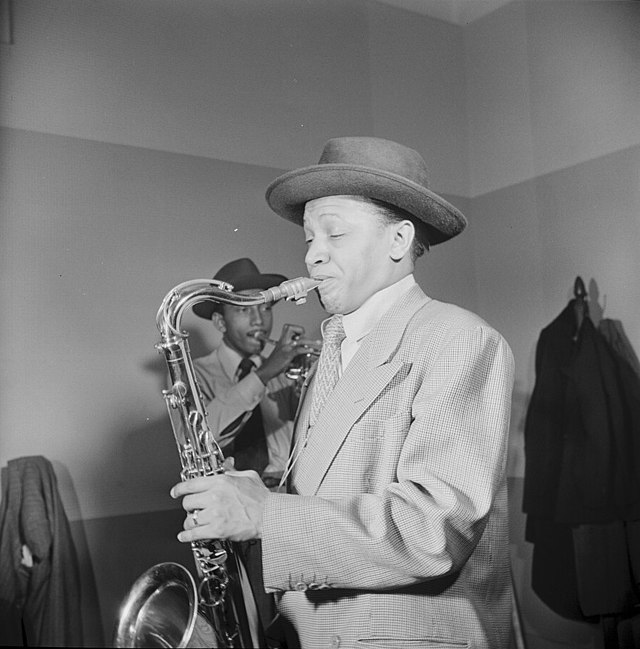
Styles: Jump Blues (aka Boogie-Woogie) 3
As heard in "Caldonia," the boogie-woogie bass pattern is one of the most pervasive features in jump blues. The boogie-woogie rhythm is characterized by repetitive eight-to-the-bar bass patterns and fast tempos. Other hallmarks of the style include swung eighth notes, an almost exclusive use of the twelve-bar blues form, and thematic material based on the rhythmic juxtaposition of short motifs. Although boogie-woogie has been played by small ensembles and jazz orchestras, sometimes with a vocal part, in essence it is a solo piano genre such as what is heard in "Martha's Boogie" by Martha Davis. Take note of her left hand playing the boogie-woogie pattern.

Martha DAVIS " Martha's Boogie " !!! [ 00:00-00:00 ]
Listen to Hazel Scott in the 1943 film This is the Army as she performs, on piano, a scene using the boogie-woogie rhythm.

Hazel Scott in the Army(Hazel in Caisson Number) [ 00:00-00:00 ]
Featured saxophone solos was another aspect that added to the development of rhythm and blues. On many jump blues records they were often frenetic and theatrical. They featured over-blowing, biting down on the reed to produce shrilling sounds in the upper register, distortion, cracked notes, extreme volume, and single-note repetition, often to the point of trance-inducing hysteria. This playing style is known as the honking tenor saxophone tradition. Illinois Jacquet's intense solo in his recording on Lionel Hampton's 1943 recording of "Flying Home" is considered its first recorded example.

Lionel Hampton - Flying Home (1957) [ 00:00-00:00 ]
In the 1940s, honking tenor sax players were the equivalent of later guitar heroes bringing to performances and recordings a sense of virtuosity, daring, outrageousness, and excitement. Over time, a few of these players led their bands, releasing largely instrumental records that featured extended frenetic tenor sax solos. Notable honking saxophone band leaders included Big Jay McNeely, whose 1949 hit "Deacon's Hop" virtually defined the genre, and Paul Williams and His Hucklebuckers, whose version of "The Huckle-Buck" was the No. 1 rhythm and blues record that same year.
Sh-Boom
Oh, life could be a dream
(Sh-boom)
If I could take you up in paradise up above
(Sh-boom)
If you would tell me I'm the only one that you love
Life could be a dream, sweetheart
Sweet Lorraine
Just found joy
I'm as happy as a baby boy,
baby boy
With another brand new
choo-choo choy
When I met my sweet Lorraine, Lorraine, Lorraine








